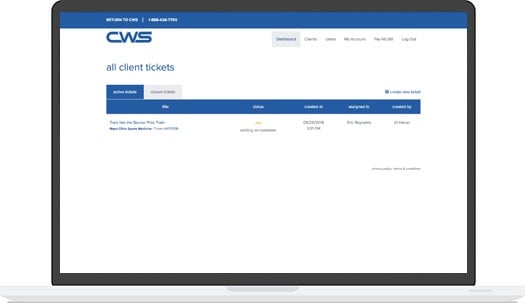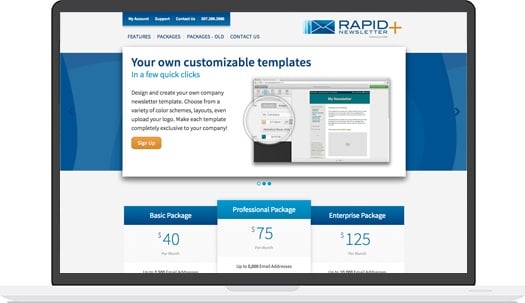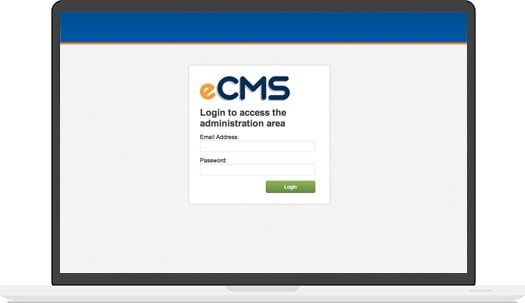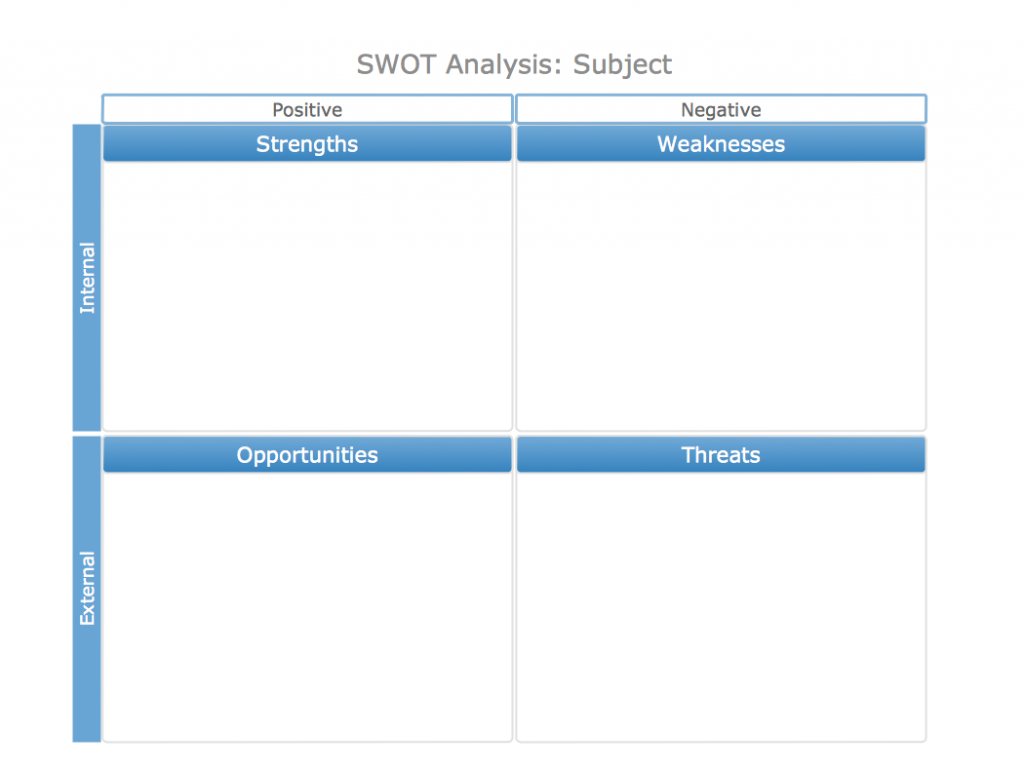543,000 new businesses start each month. The global marketplace is becoming a crowded and challenging environment. Identifying what your business is doing right, and what it could do better, is an important exercise if you want to maximize potential, increase profits, and succeed over competitors.
Download your free Toolkit To Create Your Company's USP.
A highly effective method to assess your business and its competitors is through a SWOT analysis. A SWOT (Strengths, Weaknesses, Opportunities, and Threats) analysis not only identifies what your business is doing right and wrong, but can also help you formulate an action plan to reach your company's short and long term goals.
Additionally, it is a strong team building exercise your employees.
The first step is, to create a chart similar to this:
You need 4 separate quadrants
1. Strengths
2. Weaknesses
3. Opportunities
4. Threats
Then brainstorm bullet points for each quadrant.
Strengths
-
What does your business do well?
-
Does your organization have any advantages?
-
Why do your people love your organization?
-
Do you have a Unique Sales Position (USP)?
Consider all perspectives; employees, customers, and the general public. What makes you stand out as an organization?
If you are having trouble thinking of strengths, list out characteristics of your business and hopefully some of those characteristics are possible strengths!
Think of your strengths in relation to your competitors. If you both provide exactly the same thing, it’s not a strength.
Weakness
-
What could you improve in your business?
-
What don’t your customers like?
-
Which factors affect your sales?
-
Are there any internal weaknesses?
Again, think employees and customers. Are there possible weaknesses your company doesn't see? Ask your customers, “What can we do better”? Do your competitors have an advantage over your product/service?
Remember: Be as realistic as possible. This SWOT analysis won't be effective without honesty.
Opportunities
-
What current/future opportunities do you see?
-
Are there any up and coming trends you can benefit from?
-
Will changes in things, like technology, advance your possible market?
-
Will emerging social or lifestyle patterns affect your business?
A good way to develop opportunities is to review your strengths. Could a strength become an opportunity?
Then review your weaknesses and ask yourself, if you eliminate any, will you open up any opportunities?
Threats
-
Do you see any current/future obstacles?
-
Is technology threatening your business in any way?
-
Are there any cash flow issues or possible economic turbulence?
-
Are there standards or governmental regulations threatening your products or services?
An easy way to identify possible threats is to think of “P.E.S.T.” (Political, Economical, Socio-cultural, and Technological) Breaking it into these four categories will help you identify current or future threats your organization may face.
Analyzing the Data
Once you have filled out all 4 quadrants of your SWOT chart, it is time to analyze the collected data and create a strategic plan.
Then, pull the group back together and present the plan, to ensure everyone in your organization is aware of your strategy.
It should spell out:
-
The steps necessary to achieve the goals
-
Employee’s expected role in the plan
-
And the rewards for working hard to attain those goals
A SWOT analysis is a tried and true method that can help a businesses get back on track. By involving the entire staff you’ll get better data and buy-in when it’s time to execute the plan.

.jpg?t=1533315998368) How-To Articles
How-To Articles Support Portal
Support Portal Webmail
Webmail Rapid Newsletter+
Rapid Newsletter+ eCMS
eCMS



 Our content team is made up of thought leaders, strategists, and content creators who have more than 70 years of combined experience. With a wide variety of backgrounds as entrepreneurs, marketing gurus, healthcare associates, as well as plenty of experience in other industries, we help grow businesses with our relevant, trusted, and helpful resources.
Our content team is made up of thought leaders, strategists, and content creators who have more than 70 years of combined experience. With a wide variety of backgrounds as entrepreneurs, marketing gurus, healthcare associates, as well as plenty of experience in other industries, we help grow businesses with our relevant, trusted, and helpful resources.
